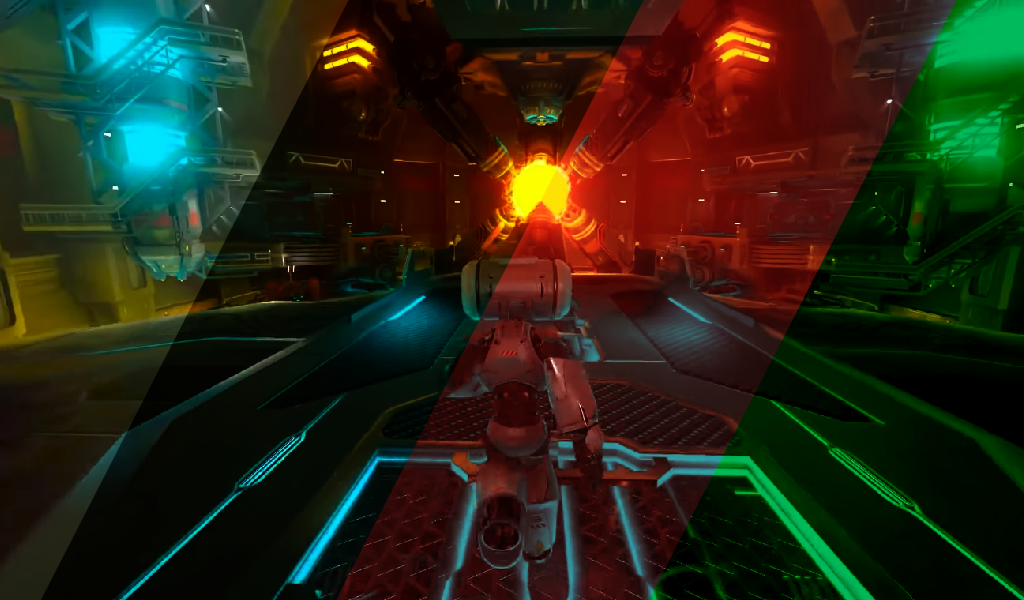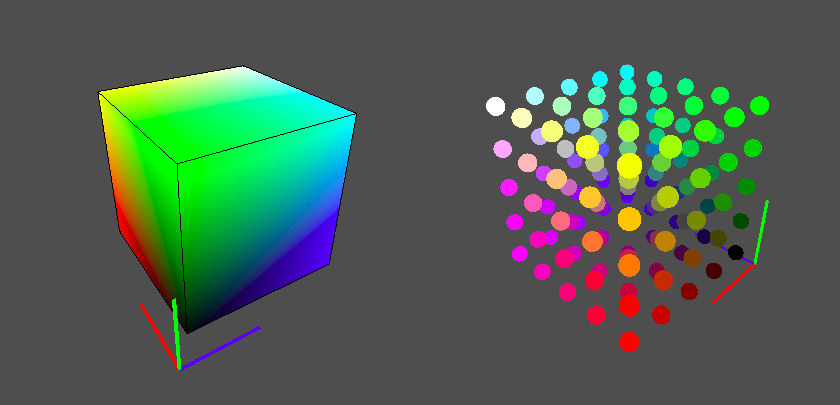Real-Time Color Grading using LUT shader for Godot 3.
This shader remaps all rendered pixel colors into new ones according to a provided 3D lookup table (LUT) texture. It's a highly versatile and efficient color correction technique for real-time applications in Godot.
- Copy the folder "color_grading_lut" from "addons" to your project's "addons" folder.
- Go to Project Settings -> Plugins and change the status from "Color Grading LUT Assist Tool" to Active.
- Click in "Add Child Node" button in the Scene tab.
- Search for "ColorGradingFilter" and select it.
- Go to the Inspector tab, look for "Lut" and change to a different LUT.
- There's a list of useful LUTS in "addons/color_grading_lut/default_luts".
- Resize the control to cover the whole screen or the desired area.
To assist in the creation of the LUTs, the screenshot plugin enables taking screenshots while playing the project and preparing it for color correction in an external image editor (such as Krita) by placing an identity LUT in the top left corner of the generated image.
- Place a ColorGradingTool node into your scene (Add Child Node -> ColorGradingTool)
- Press the Play button in the editor
- Press F11 to take the screenshot. It'll go to the root folder of your project.
With this screenshot in hands, you can use your preferred image editor to apply your color transformations. In the end, just crop the upper-left corner of your image to get your final LUT (256x16 pixels by default).
Demo for RGB Cube visualization and discretization: https://www.openprocessing.org/sketch/744896
This fragment shader uses a precomputed lookup table mapping the RGB domain to match your current pixel color with its respective position in the lookup and swap it with lookup's one.
For the values that are not present in the table, a type of linear interpolation called trilinear interpolation is made using the 8 surrounding color samples to track the distances between them and the original color. Those distances are reapplied in the new color space's samples to get an approximated color value.
As we only look at the lookups to create this effect, this method can acquire the same result of multiple real-time color operations with only an unexpensive texture read cost.
The intended color mapping should not depend on the pixel position or its adjacent pixels. As we only look into the LUT texture, we can't check the position or adjacent cells without increasing the algorithm's complexity and giving up the most useful aspect of this technique: performance.
The provided LUT should also not be too sparse, otherwise transformation artifacts might occur in the final image. A workaround for this would be to increase LUT's size to improve its quality but its always advised to rework your transformation operations in your external image editor to improve LUT samples sparsity.
- Adrian Courrèges' Metal Gear Solid V Graphic Study: http://www.adriancourreges.com/blog/2017/12/15/mgs-v-graphics-study/
- NVIDIA's GPU Gems - Lookup Tables to Accelerate Color Transformations: https://developer.nvidia.com/gpugems/GPUGems2/gpugems2_chapter24.html
- Wikimedia 6-bit RGB Cube that encouraged my application in Open Processing: https://commons.wikimedia.org/wiki/File:6-bit_RGB_Cube.gif
- Herman Tulleken's Gamasutra article regarding the effect of color usage in games: https://www.gamasutra.com/blogs/HermanTulleken/20150729/249761/Color_in_games_An_indepth_look_at_one_of_game_designs_most_useful_tools.php
- SuperCinema's analysis of movie's color palette (in portuguese):
- Mad Max Fury Road: https://www.youtube.com/watch?v=MDJ0xjwzC5M
- Birdman: https://www.youtube.com/watch?v=eNYzZ1hXDKo&t=494s
- Talk (in portuguese): https://youtu.be/_R1h4bkelic?t=3458
- Slides (in portuguese): https://docs.google.com/presentation/d/1Gmi-eBaN5yx5iJSWcFsm2S9rKiE8CaaQknNkPeFt_NM/edit?usp=sharing

